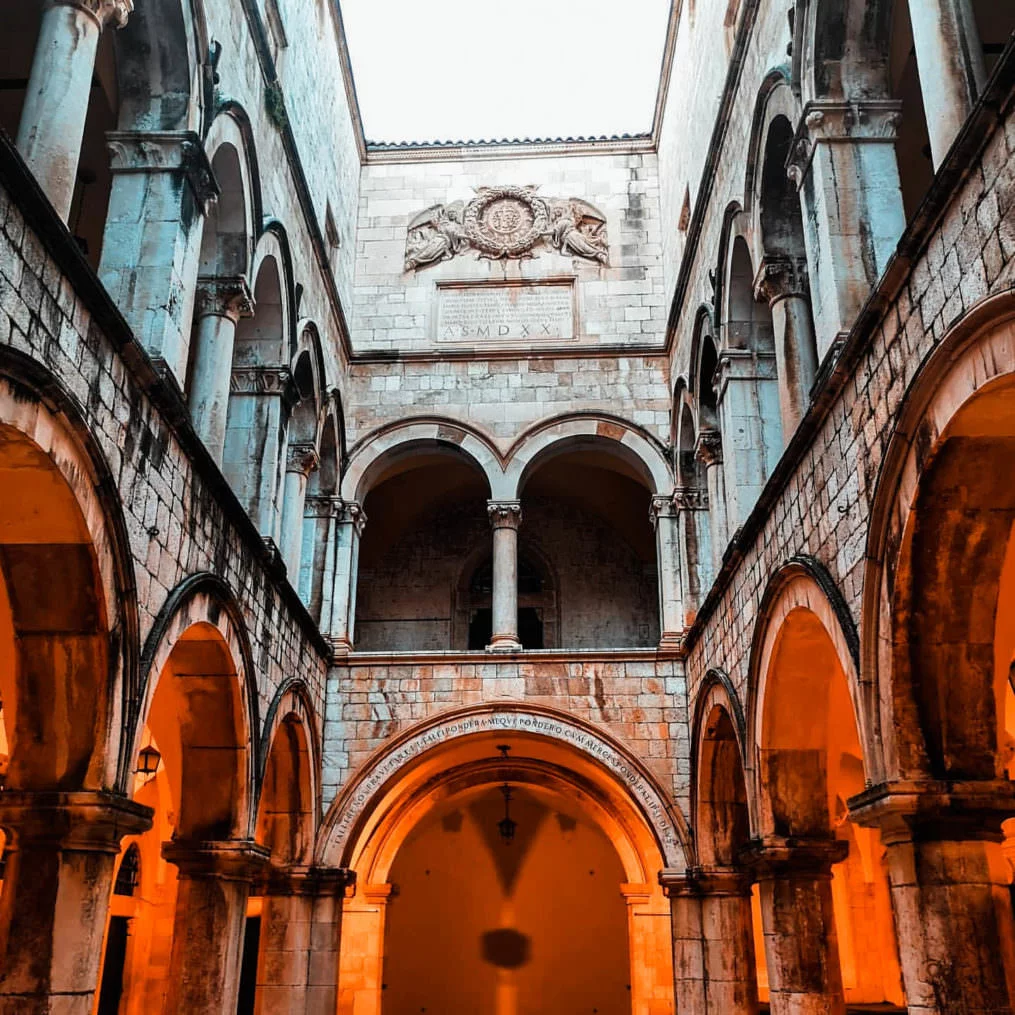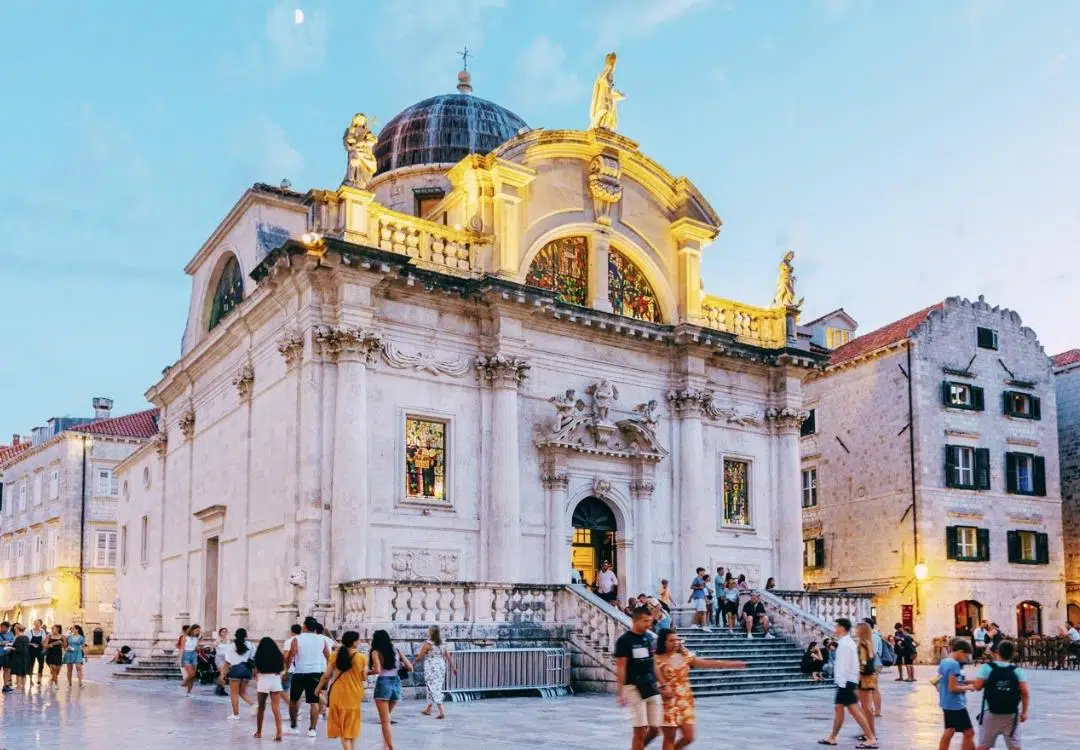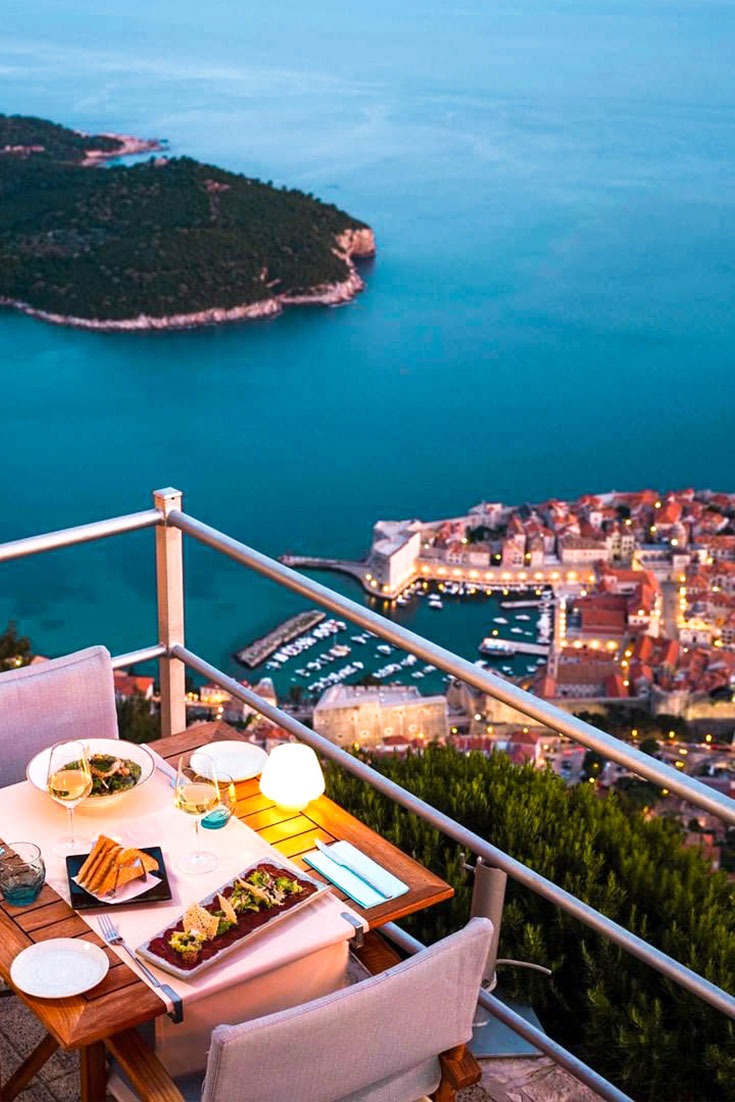If you are travelling to Dubrovnik, one of the attractions you see will surely be the St. Blaise's Church. It is situated in the heart of the City, on a beautiful street and the main artery of Dubrovnik - Placa, also called Stradun. It's basically unavoidable because it's so prominently placed.
It is dedicated to the patron saint of Dubrovnik, Blaise of Sebaste, a Christian saint and bishop. The church has symbolized the survival of this fairy-tale city for centuries. St. Blaise became the patron of the City-Republic a long time ago.
St. Blaise – patron of Dubrovnik
Saint Blaise is the Patron of Throat Illnesses and of wool combers. He is also one of the Fourteen Holy Helpers. Legend has it that Saint Blaise treated a boy with a fishbone caught in the throat and ultimately was able to save the boy from death.
It is said that Blaise was of noble birth and was made bishop of Sebastia after being educated in the Christian faith.
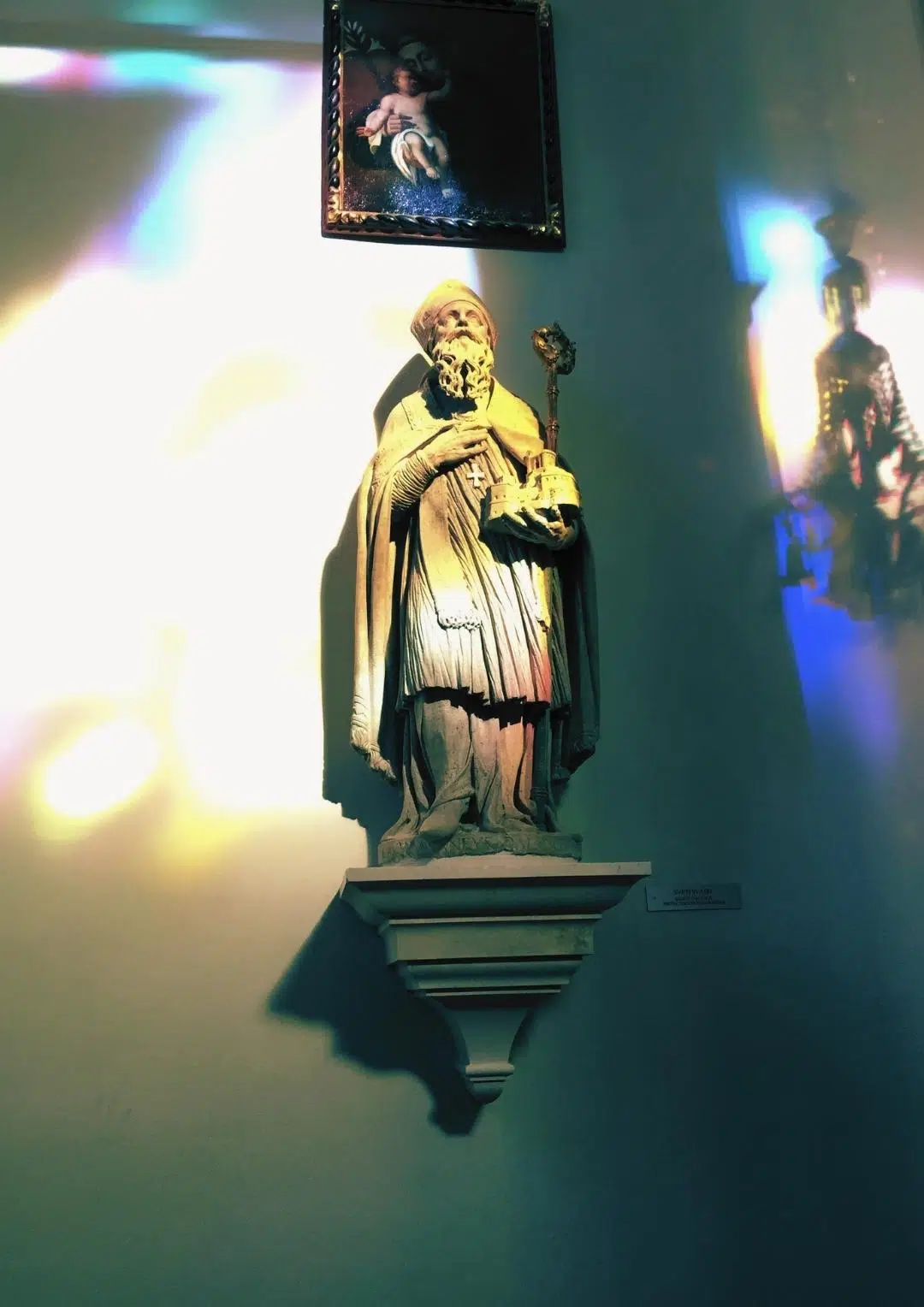
Today, an invocation to St. Blaise and a throat blessing are still practiced in Dubrovnik. The blessing is performed by holding two candles open and pressing them against the throat.
Why is Saint Blaise patron of Dubrovnik?
According to tradition, the people of Dubrovnik have celebrated St. Blaise (Sveti Vlaho) as their patron since 3 February 972. Namely, on that day is the feast of St. Blaise, who in other parts of Croatia is also known as St. Blaž (from the Latin Sanctus Blasius).
The veneration of St. Blaise in Dubrovnik is associated with the legend of his help to the city during the Venetian attack. According to the legend from the 15th century, the Venetians also planned to conquer Dubrovnik after conquering the Neretva valley in 971. They planned to attack the city by deception during the night.
St. Blaise appeared to the pious priest Stojko, pastor of the church of St. Stephen, and warned him about the intentions of the Venetians. Thanks to the warning, Dubrovnik defenders were ready to meet the enemy and repulsed them, damaging their ships.
Seeing that their ambush had failed, the Venetians went out to sea and escaped. The people of Dubrovnik recognized their liberation as a special grace of St. Vlaho and designated him as their patron. Since then, the celebration of St. Blaise's Day has been a holiday for all residents of the Republic of Dubrovnik.
Interesting: The city introduced the so-called Freedom of St. Blaise so everyone could participate. It was a period when every offender, convict, and exile could freely come to the city, and no one was allowed to call them to account. The period lasted two days before and two days after St. Blaise Day. Dubrovnik later extended this freedom to 7 days before and seven days after the holiday.
Early church of St. Blaise
Early in the 18th century, the baroque church was built on the foundations of an old Romanesque 14th-century church. Having survived the great earthquake in 1667, the latter was unfortunately destroyed on White Sunday in 1706 in a huge fire caused by the candles that initially burned the wooden interior and then spread to the structure itself. The sacristy was the only part that survived.
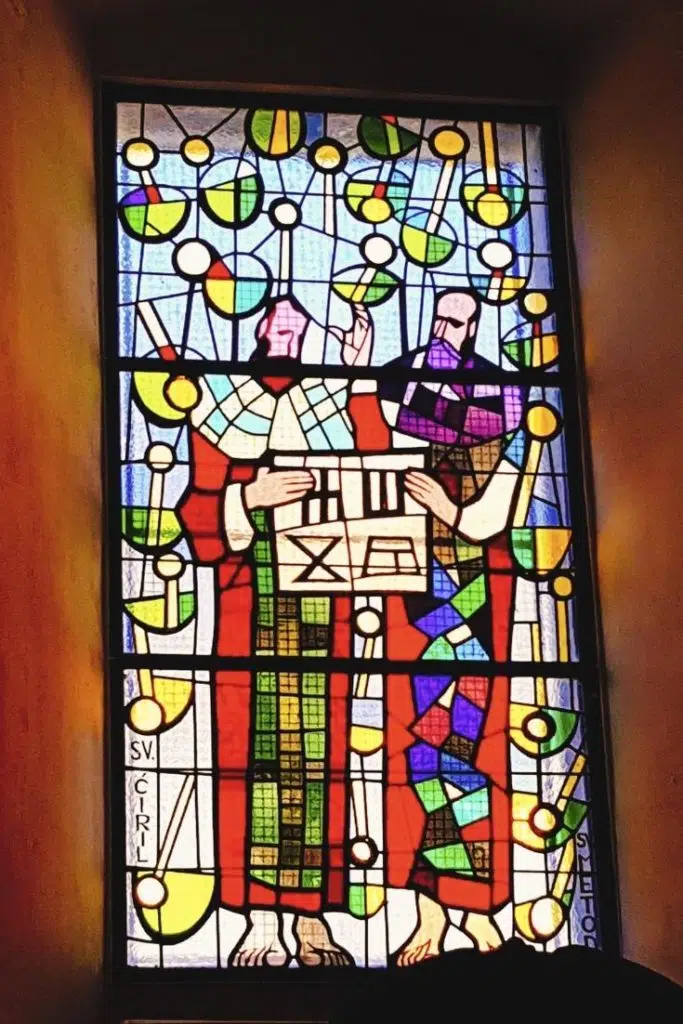
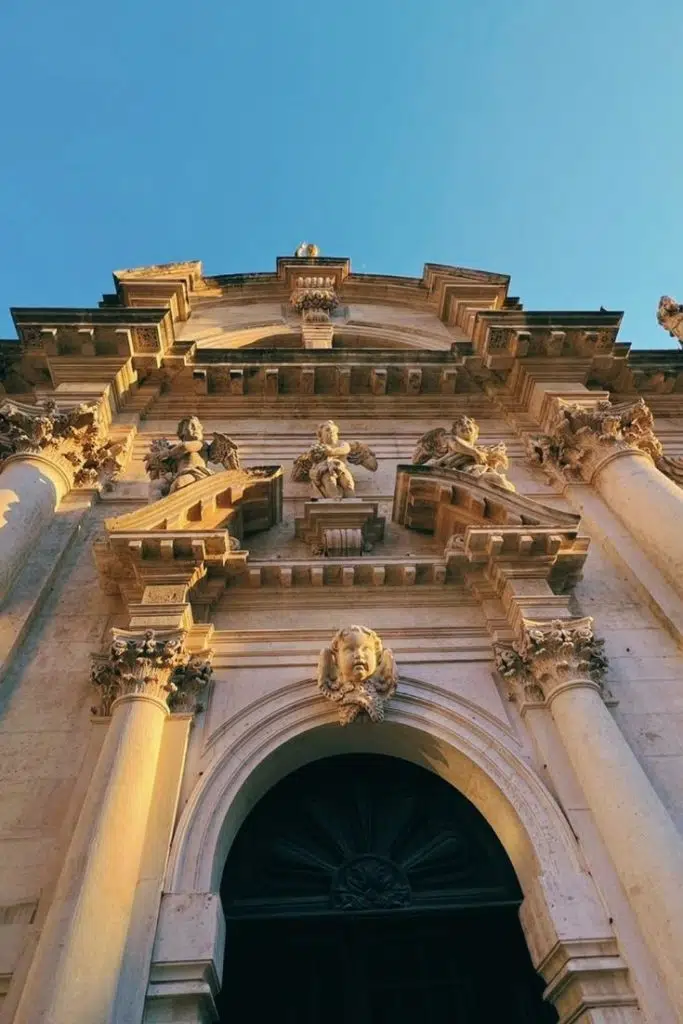
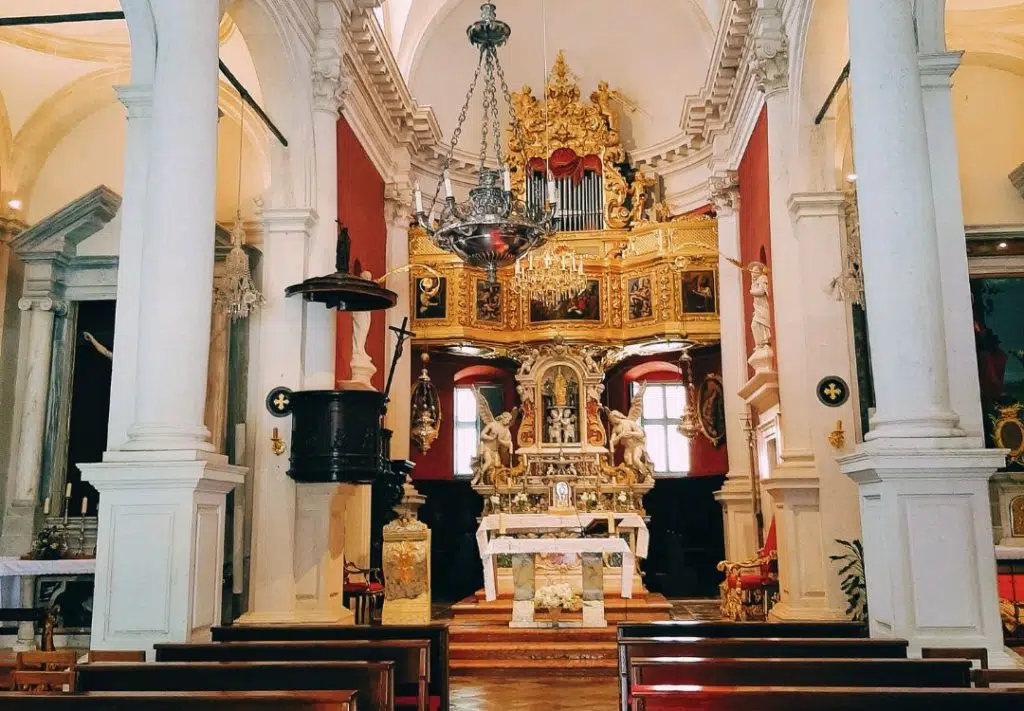
Interestingly, the only saved object of the immensely rich collection of artwork and liturgical items was a silver statue of the blessed martyr Blaise (according to the writing on the church plate), found intact under the ashes.
This magnificent silver and a gold-plated statue of the patron, manufactured in one of the widely-known goldsmith workshops of Dubrovnik in the first half of the 15th century, still stands on the church's main altar.
Rebuilding the church
The new baroque church was built by local constructors from 1707 - 1715, based on the design of the renowned Venetian architect and sculptor Marino Groppelli, who made the main marble altar himself, the St Peter's statue above the sacristy door, and the statue of John the Baptist above the main entrance.
Groppelli also created the statues of St. Blaise, Faith, and Hope on the top of the façade and the Angel above the portal. In addition, a large number of art objects that also have a liturgical function have been preserved.
There is only one square nave within the church, a ground plan with an oblong dome in the middle, an apse flanked by two sacristies, and a single, inscribed Greek cross in the middle.
The church has two side altars: the altar of St. Cross to the left, like the one that used to stand in the Romanesque church, and the altar of St. Lucia with the paintings of Madonna with the Infant, St. Blaise, and St. Emigdi, protector from the earthquake, works by the local painter Josip Rossi (19th century).
Interesting: Dubrovnik is situated in a seismically active region. With remembrance of the Great Earthquake in 1667. the faithful installed yet another patron (St. Emigdi) to protect them from this calamity.
The aisles, the one to the right is the sacristy, contain paintings, crucifixes, silver receptacles, mass vestments, and porcelain ornaments, mainly from the 18th century. These art objects were provided at the time when the church was rebuilt.
Five relics of St Blaise are now kept at the reliquary of the Cathedral of Assumption, encased in luxurious silver frames. Frames are shaped like a crown, hands, legs, and a monstrance dating back to the 11th, 12th, 14th, and 15th centuries, respectively.
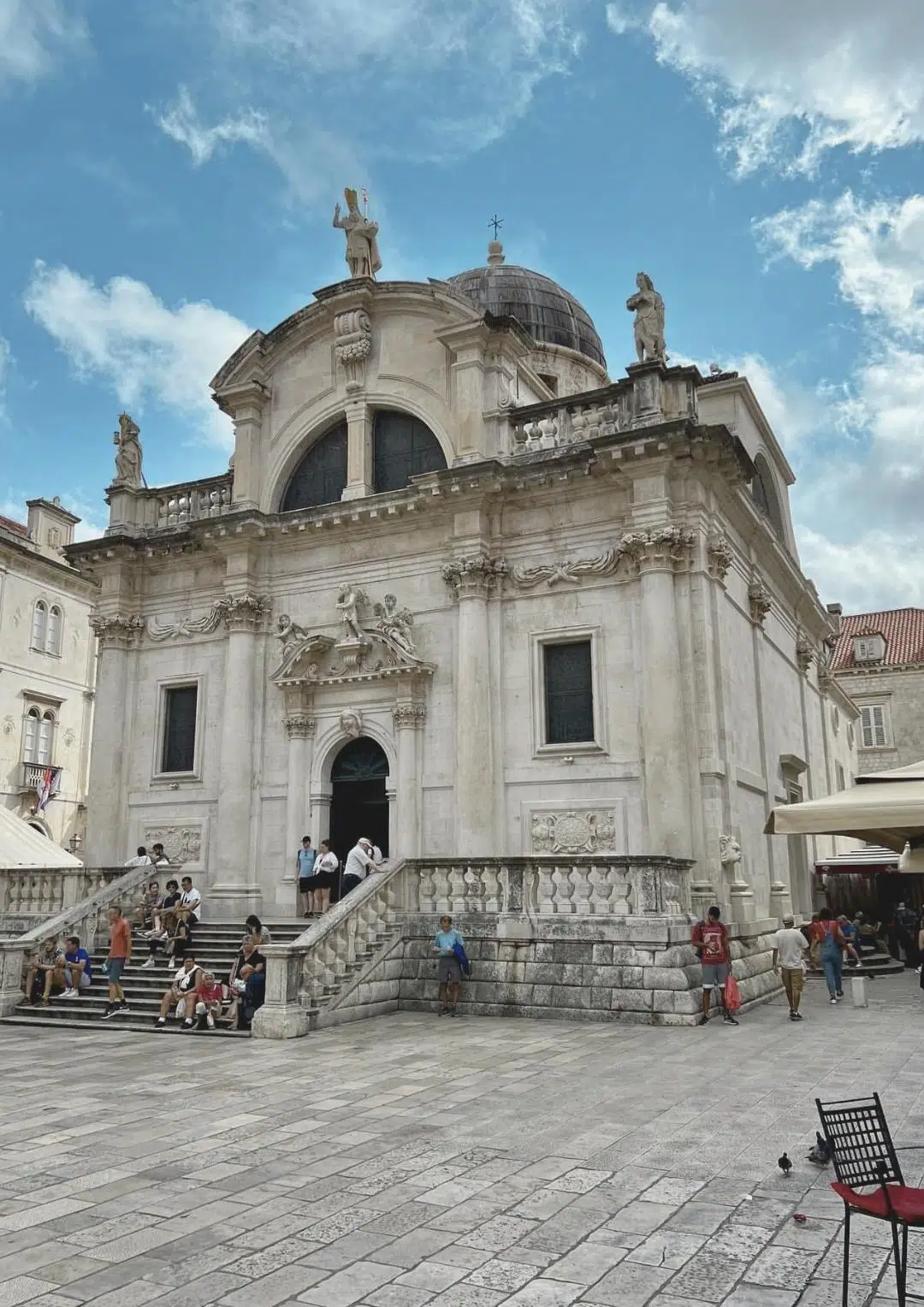
The art objects from the 19th and 20th centuries testify to the continuous care of the parish priests and the congregation for their church. Thus, a statue of St. Blaise made by the great Croatian modern sculptor Ivan Meštović was installed next to the renaissance statues of St. Blaise and St. Jerome made in the 15th century by Nikola Lazanić, the renowned sculptor from the Island of Brač.
The church's interior is illuminated in a special way by the rays of light coming through the fine stained-glass windows painted by the famous local painter Ivo Dulčić in the mid-20th century. In addition, there are many paintings of saints by lesser-known Italian painters on the church walls.
Interesting: In the old sacristy to the right is an interesting 18th-century oil painting of an earthquake destroying the houses, palaces, and clock towers of Dubrovnik, with St. Blaise pleading for mercy for his City. It illustrates the long-term bond between the residents of Dubrovnik and their protector that has continued until today.
They dedicated one of the major churches to St. Blaise and installed his statue on every public building, fortress and façade, and the city walls. In return, the old bishop and patron have been protecting his city for centuries.
During the aggression against Croatia, St. Blaise's Church was hit several times, and its façade, the stairway with a balustrade, the portal, the stained-glass windows, and the roof were damaged.
During one of the most severe bombardments of the City on 6th December 1991, the residents of Dubrovnik asked the city authorities to uncover one of the statues of St. Blaise, which was previously paneled in wood to protect it from damage, so that he could protect and bring peace back to Dubrovnik once more.
Saint Blaise church today
You are welcome to explore the ornate Baroque interior of the Church of Saint Blaise for free. There is no entrance fee. The wide staircases at the entrance of the church are a great place to sit, enjoy your ice cream and soak in the atmosphere of Dubrovnik Old Town. Mass times are fairly regular.
At night you can admire the stunning balustrade and colorful stained glass illuminated by lights. The Church of Saint Blaise is specialy an eventful place at the Feast of Saint Blaise. It is celebrated on the February 3rd each year. Processions, parades, and street celebrations are all part of the event.
